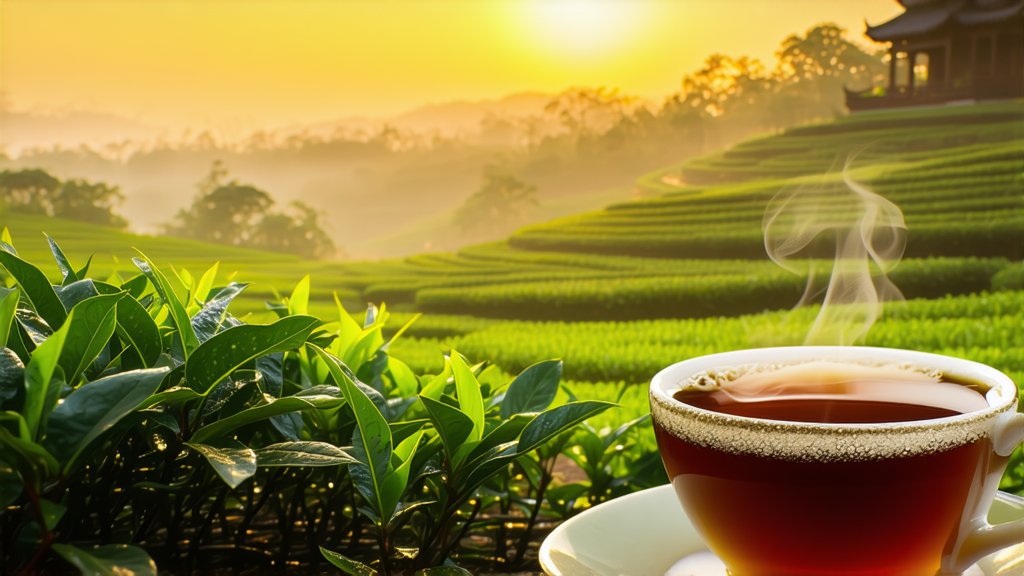
In the vast and diverse landscape of Chinese tea culture, few varieties have achieved the international acclaim and reverence that Keemun Black Tea commands. Originating from the picturesque mountains of Anhui Province, this golden elixir has captured the hearts and palates of tea connoisseurs around the globe. In this exploration of Keemun Black Tea, we will delve into its storied history, intricate production process, distinctive varieties, and the art of its appreciation.
A Glimpse into History
The story of Keemun Black Tea begins in the early 19th century during the Qing Dynasty. It was in the small village of Qimen County, nestled within the verdant hills of southern Anhui Province, where this remarkable tea first emerged. Legend has it that a local farmer named Xu Guoqing discovered the unique qualities of the tea when his green tea leaves accidentally underwent a longer fermentation period due to adverse weather conditions. This serendipitous event led to the creation of a tea with a distinct flavor profile, setting the stage for what would become one of China's most celebrated black teas.
Varieties and Characteristics
Keemun Black Tea is renowned for its rich, full-bodied flavor and captivating aroma. There are several notable varieties, each with its own unique characteristics:
-
Gong Mei (宫眉): Often referred to as "Imperial Eyebrow," Gong Mei is made from the finest young buds and leaves. Its name reflects its high quality and delicate appearance, resembling finely arched eyebrows. This variety offers a smooth, slightly sweet taste with hints of orchid and fruity undertones.
-
Zhen Mei (珍眉): Meaning "Precious Eyebrow," Zhen Mei is crafted from slightly more mature leaves and buds. It presents a robust flavor profile with notes of malt, honey, and a subtle smokiness, providing a more intense experience compared to Gong Mei.
-
Xian Bei Dou (仙贝斗): Known as "Immortal Conch Shell," Xian Bei Dou is made from larger leaves and features a bolder, more assertive taste. It carries earthy and woody notes, making it a favorite among those who prefer a stronger black tea.
The Art of Production
The production of Keemun Black Tea is an art form that combines tradition and precision. Here's a step-by-step overview of the process:
-
Withering: Freshly harvested tea leaves are spread out in thin layers to wilt under the sun or in well-ventilated rooms. This step reduces moisture content and softens the leaves, preparing them for rolling.
-
Rolling: The withered leaves are rolled to break down cell walls, allowing enzymes to interact with oxygen. This rolling can be done by hand or using specialized machines to achieve the desired shape and size.
-
Oxidation: The rolled leaves are spread out again to undergo oxidation, a crucial stage where polyphenols react with oxygen, forming complex compounds that contribute to the tea's color, flavor, and aroma. The duration of oxidation varies depending on the desired outcome for different Keemun varieties.
-
Firing: After oxidation, the leaves are fired in large woks or drums to halt enzymatic activity and remove excess moisture. This step also develops the final flavors and aromas of the tea.
-
Sorting and Grading: Once dried, the tea leaves are sorted and graded based on size, shape, and quality. This ensures consistency and enhances the overall aesthetic appeal of the finished product.
The Art of Appreciation
Tasting Keemun Black Tea is an experience that engages all the senses. Here’s how you can fully appreciate this exquisite beverage:
-
Warm the Teapot and Cups: Begin by warming your teapot and cups with hot water to maintain the optimal temperature for brewing.
-
Measure the Leaves: Use about one teaspoon of Keemun Black Tea per cup (approximately 200 ml) of water. Adjust according to your preference for strength.
-
Boil the Water: Heat water to just below boiling, around 90-95°C (194-203°F). Over-boiling can scorch the delicate leaves and affect the flavor.
-
Steeping: Place the tea leaves in the warmed teapot and pour in the hot water. Steep for 3-5 minutes, depending on how strong you like your tea. For subsequent infusions, adjust the steeping time slightly longer.
-
Observe the Liquid: As the leaves unfurl, a rich amber liquor forms, signaling the readiness of the tea.
-
Aroma: Inhale the fragrant steam rising from the freshly brewed tea. Note the complex bouquet of floral, fruity, and earthy scents.
-
Tasting: Take your first sip and let the tea coat your palate. Notice the balance of flavors—the initial sweetness, mid-note complexity, and the lingering aftertaste. Each variety of Keemun Black Tea offers a unique tasting journey.
-
Appreciate the Leaves: After brewing, inspect the wet leaves. High-quality Keemun leaves should be tender and vibrant, indicating proper processing and handling.
Conclusion
Keemun Black Tea is not merely a beverage; it is a testament to centuries of tea-making heritage and craftsmanship. From its humble beginnings in the mist-covered mountains of Anhui to its current status as a global icon of fine tea, Keemun continues to enchant tea lovers with its depth, complexity, and elegance. Whether you are a seasoned tea aficionado or a curious newcomer, savoring your first cup, Keemun Black Tea promises an unforgettable journey through the rich tapestry of Chinese tea culture.